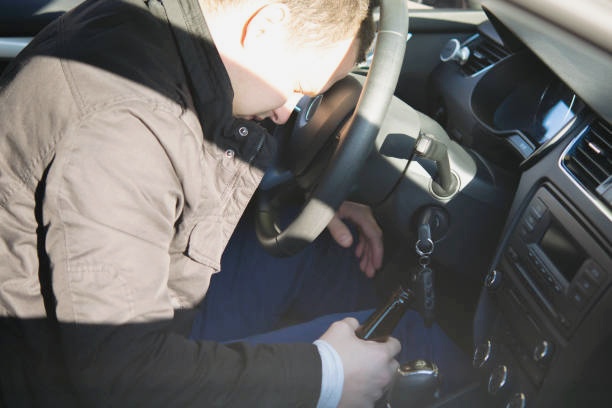If your car refuses to start even though the battery is fully charged, it can be a confusing and stressful experience. In most cases, a car that won’t start but has a good battery means there’s a problem somewhere else in the starting system. While the battery provides the power needed to turn the ignition and run the electronics, other components like the starter motor, alternator, fuel pump, ignition switch, or even a blown fuse can stop your car from starting. Understanding how these parts work together makes it easier to pinpoint the real cause of the problem. In this guide, you’ll discover the top ten reasons your car might not start even when the battery is fine, along with practical troubleshooting tips to help you fix the issue quickly. Whether you enjoy handling small car repairs yourself or prefer taking it to a trusted mechanic, this information will help you save time, avoid unnecessary costs, and get your vehicle running smoothly again.
Also read: why is my car overheating
Reasons Why is my car not starting but the battery isn’t dead and how to fix it
Below are the most common reasons your car won’t start and how to fix it:
1. Faulty Starter Motor: Can It Be the Starter Motor?
The starter motor is a key component of your car’s ignition system, responsible for spinning the engine when you start the vehicle. It draws power from the battery to help ignite the engine and get it running. If the starter motor is worn out or damaged, it may fail to engage properly, leaving the car silent or producing a clicking noise even when the battery is fully charged. This issue often develops over time due to normal wear, heat exposure, or corrosion inside the motor, and it can prevent your car from starting reliably, making it important to recognize the signs early.
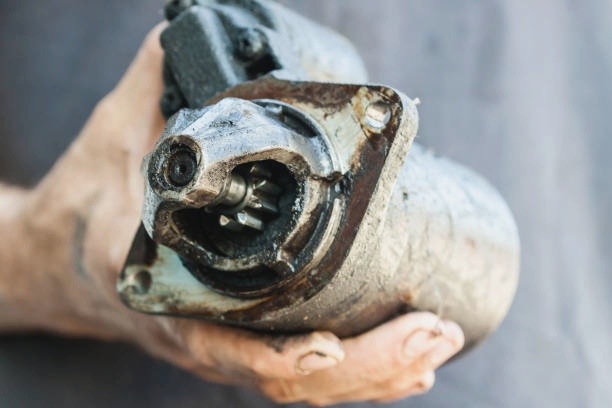
How to Fix It: If your car doesn’t start but the battery and lights appear fine, first check the battery terminals to ensure they are clean, tight, and free of corrosion, as even minor buildup can prevent the starter from working properly. If the terminals are in good condition, the issue is likely the starter motor itself. Lightly tapping the motor can sometimes free a stuck part temporarily, but this is only a short-term solution. The most reliable approach is to have a certified mechanic test and replace the starter if needed. Installing a properly functioning starter ensures your engine starts smoothly, prevents further electrical problems, and keeps your car running reliably.
2. Broken Ignition Switch: Could It Be the Ignition System?
The ignition switch is one of the most important components in your car’s electrical system. It controls the flow of power from the battery to key systems like the starter motor, fuel pump, and ignition coil. When this switch becomes worn out or damaged, your car may fail to start even though the battery is fully charged. Common signs include no dashboard lights, the engine not cranking, or accessories like the radio not working when you turn the key. Over time, repeated use, dirt, or internal wear can cause the ignition switch to fail unexpectedly.
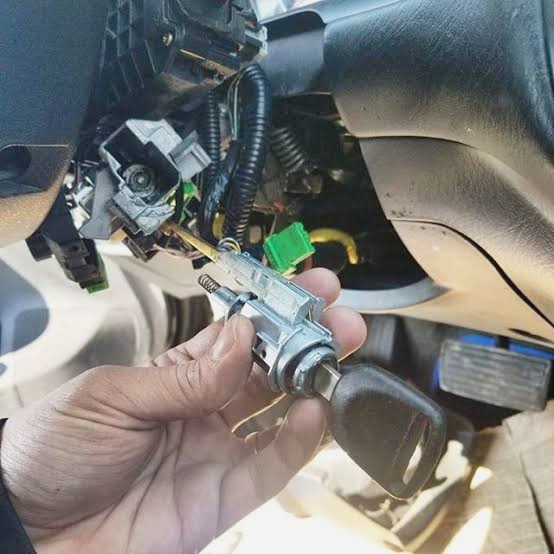
How to Fix It: If turning the key or pressing the start button produces no reaction at all, the ignition switch may be to blame. Before replacing it, check that the key isn’t worn out and that your steering wheel isn’t locked. If those aren’t the issue, you’ll likely need to replace the switch. Since it involves working around the steering column and electrical wiring, it’s best to have a professional mechanic handle the job. A new ignition switch restores proper power flow, ensuring smooth and reliable engine starts.
3. Fuel System Issues: Is the Engine Getting Fuel?
Your engine relies on a steady flow of fuel to start and run smoothly. If there’s a problem with the fuel pump, filter, or fuel lines, the engine may not be getting enough fuel to ignite. A weak fuel pump can’t push fuel effectively to the engine, while a clogged fuel filter can block the flow entirely. Damaged or leaking fuel lines can also cause low pressure, preventing proper combustion. These issues often lead to hard starts, sputtering, or the engine dying shortly after ignition.
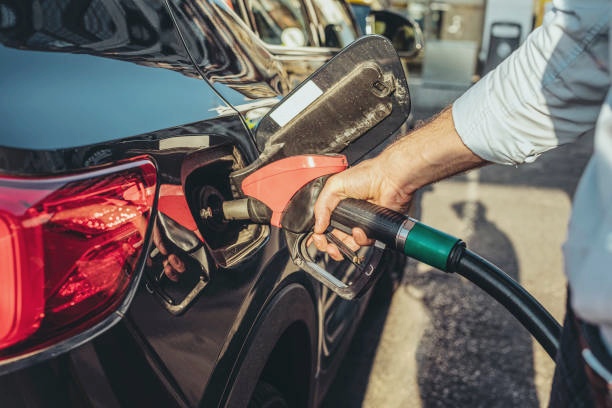
How to Fix It: First, check your fuel gauge to make sure you actually have enough fuel in the tank. If the tank isn’t empty but the car still won’t start, listen for a faint humming sound near the fuel tank when you turn the key — if you don’t hear it, the pump may have failed. Replacing a clogged fuel filter or a bad fuel pump often solves the issue. You can also use an OBD-II scanner to detect any fuel system-related error codes. If you’re not confident handling fuel components, have a certified mechanic inspect the system to ensure safe and accurate repairs.
4. Faulty Alternator: Is the Alternator Charging Your Battery?
The alternator plays a vital role in keeping your car’s battery charged while the engine is running. It converts mechanical energy from the engine into electrical power that recharges the battery and runs systems like the lights, radio, and dashboard. When the alternator becomes weak or fails, it can no longer supply enough voltage, causing the battery to drain even though it’s in good condition. Common symptoms include dim headlights, flickering dashboard lights, or a warning light shaped like a battery appearing on your dashboard. If ignored, a bad alternator can eventually leave you stranded with a dead battery.
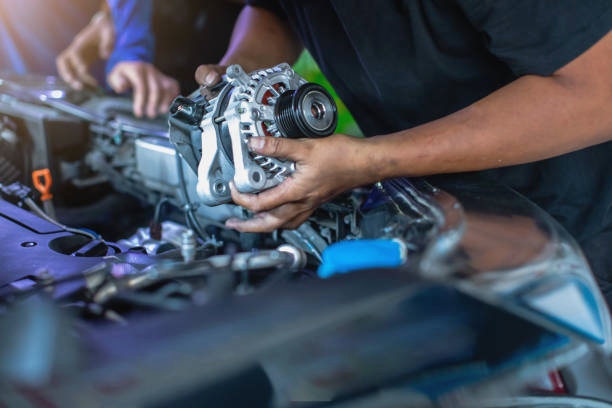
How to Fix It: To confirm the problem, test the battery voltage using a multimeter. A healthy alternator should keep the voltage between 13.8 and 14.4 volts when the engine is running. If the reading is lower or the voltage drops below 12 volts with the car off, the alternator is likely the issue. Have a professional mechanic inspect it, as replacing or repairing an alternator involves handling belts and electrical components. Fixing a faulty alternator early will ensure your car’s battery stays charged and your electrical systems continue working properly.
5. Clogged Fuel Filter: Could a Clogged Filter Be the Cause?
The fuel filter plays a crucial role in keeping dirt, debris, and rust particles from reaching the engine. Over time, this filter can become clogged, restricting the flow of fuel and preventing your engine from getting the right amount it needs to start or run smoothly. When the filter is blocked, you might notice symptoms like hard starting, sputtering, loss of power, or the engine dying shortly after ignition. In severe cases, the car won’t start at all because fuel can’t reach the combustion chamber. Regular maintenance and fuel filter replacement help keep your fuel system clean and your engine healthy.
How to Fix It: If your car struggles to start or feels sluggish while driving, the fuel filter may be overdue for a change. Check your owner’s manual for the recommended replacement interval. With basic tools, you can replace the filter yourself, but be sure to relieve the fuel pressure before removing it. If you’re unsure, a mechanic can handle the replacement quickly and safely. Installing a new filter ensures proper fuel flow, improves performance, and reduces the risk of damage to other parts of your fuel system.
6. Dead Starter Relay: Could the Relay Be Faulty?
The starter relay acts as a bridge between your car’s battery and the starter motor, allowing enough electrical current to flow and power the engine during ignition. When this small but vital component fails, the connection between the battery and starter is broken, meaning the engine won’t crank even though your battery is fully charged. Common signs of a bad relay include a single clicking sound when turning the key, or no sound at all. Over time, heat, moisture, or corrosion can damage the relay’s internal contacts, causing intermittent or complete failure.
How to Fix It: Start by locating the starter relay your car’s manual will show its exact position, usually in the fuse box under the hood. You can test it by swapping it with another identical relay from a non-essential system, such as the horn or headlights. If your car starts after swapping, it confirms the relay is bad. Replacing it is simple and inexpensive, and doing so ensures consistent electrical flow to the starter motor. For best results, always use a quality relay that matches your car’s specifications.
7. Security System or Immobilizer Issue: Is the Anti-Theft System Malfunctioning?
Modern cars are fitted with advanced security systems, including immobilizers, that prevent the engine from starting unless the correct key or transponder signal is detected. This technology helps protect your vehicle from theft, but it can sometimes malfunction due to a weak key fob battery, damaged transponder chip, or interference in the car’s security module. When this happens, your car might not recognize your key, even though everything else seems fine. You may notice that dashboard lights flash or the car briefly cranks but won’t start all signs pointing to an immobilizer or anti-theft system fault.
How to Fix It: Start by using a spare key to rule out any issue with the primary key or fob. If the car still doesn’t start, try replacing the key fob battery or reprogramming it following your vehicle’s manual instructions. In some cases, disconnecting the car battery for a few minutes can reset the system. If the problem persists, it’s best to visit a professional mechanic or dealership that has the right diagnostic tools to reset or reprogram the immobilizer properly. Fixing it early prevents further electrical complications and ensures your car starts smoothly again.
8. Damaged Wiring or Corroded Connections: Are the Electrical Connections Intact?
Your car relies on a network of electrical wires and connectors to send power to essential systems like the ignition, starter, and fuel pump. When these wires become loose, corroded, or broken, the electrical flow is disrupted — even if your battery is perfectly fine. Corrosion, which often appears as a white or greenish powder, can form on battery terminals and metal connectors due to moisture and exposure to heat. This buildup weakens the connection and can cause poor voltage delivery, preventing your engine from starting or causing intermittent power loss.
How to Fix It: Begin by inspecting your battery terminals and cables for any signs of corrosion or looseness. If you notice buildup, mix baking soda and water to create a cleaning paste, then use an old toothbrush to scrub the affected areas gently. Rinse and dry the terminals before reconnecting them securely. Next, check visible wiring around the engine bay for cracks, exposed copper, or burnt insulation. Replace damaged wires or connectors immediately, and make sure the grounding wires are firmly attached. If you’re unsure where the fault lies, a mechanic can perform an electrical diagnostic test to trace the problem and restore full power flow to your car’s systems.
9. Blown Fuses: Are Any Fuses Preventing the Car from Starting?
Every vehicle’s electrical system is protected by a set of fuses that prevent damage when too much current flows through a circuit. These fuses safeguard important systems such as the ignition, fuel pump, starter relay, and dashboard controls. When one of these fuses blows, it cuts off power to the connected component — meaning your engine might not start even if your battery is fully charged. In some cases, a single blown fuse can cause your car to act completely dead or prevent key systems from engaging properly. Over time, vibrations, electrical surges, or moisture can cause fuses to weaken and fail unexpectedly.
How to Fix It: Locate your car’s fuse box — usually found under the dashboard or beneath the hood — and refer to your vehicle manual to identify which fuses control the ignition or starter system. Remove each suspect fuse and inspect it closely; a blown fuse will have a broken or melted metal strip inside. Replace any faulty ones with new fuses that have the exact same amperage rating. Avoid using random replacements, as the wrong rating can cause further electrical issues. Once replaced, try starting your car again. If fuses keep blowing repeatedly, that’s a sign of a deeper electrical short that requires a mechanic’s inspection.
10. Engine Mechanical Issues: Is There a Mechanical Problem?
While it’s less common than electrical or fuel-related problems, serious engine damage can also stop your car from starting. Mechanical issues such as a broken timing belt, seized engine, or damaged crankshaft can prevent the engine from turning over completely. When vital components inside the engine fail, the starter motor may still try to crank, but the engine won’t fire up. You might also notice strange knocking or grinding sounds before it stops working altogether. These kinds of failures usually happen due to poor maintenance, oil starvation, or worn-out internal parts that have reached the end of their lifespan.
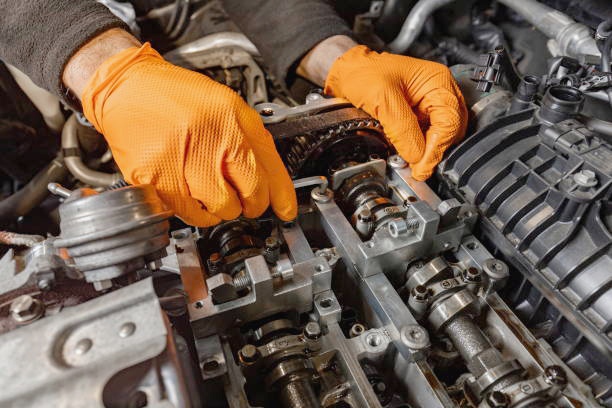
How to Fix It: If the engine doesn’t turn at all or makes unusual noises when you attempt to start it, stop trying repeatedly — forcing it could cause more damage. At this stage, the safest option is to have your car inspected by a certified mechanic. They can perform a compression test or open the engine to identify the exact cause, whether it’s a broken belt, damaged piston, or seized component. Early diagnosis and repair can save you from costlier damage and help you get your vehicle back on the road in a safer condition.
Also read: how to remove scratches from car
Conclusion
When your car won’t start but the battery is fine, the issue often lies in other key systems like the starter motor, ignition switch, fuel system, alternator, or electrical connections. Paying attention to warning signs such as slow engine cranking, dim or flickering lights, malfunctioning electronics, or corroded terminals can help you identify the real problem early. By troubleshooting carefully, performing simple checks, or seeking a professional mechanic’s help when needed, you can solve the issue efficiently, prevent further damage, and ensure your vehicle remains reliable. Understanding these common causes and acting promptly keeps your car running smoothly and gives you peace of mind every time you start the engine.
Also read: How to Clean Battery Corrosion
Frequently Asked Questions (FAQ)
1. How often should I have my car’s starting system checked?
Even if your car seems to start reliably, components like the battery, starter motor, alternator, and ignition switch wear out over time. Experts recommend having your starting system checked at least once a year or during scheduled car services. Regular inspections can detect issues early, prevent unexpected breakdowns, and extend the lifespan of your car’s electrical and mechanical systems. Simple checks, such as battery voltage tests and inspecting wiring connections, can prevent larger problems down the road.
2. Are there preventive steps to avoid starting problems?
Yes. Preventive maintenance is key to avoiding starting issues. Keep battery terminals clean and free from corrosion, ensure wiring connections are tight, and replace worn or old components before they fail. Regularly checking the fuel system, including the fuel filter and fuel pump, can prevent clogged or weak fuel flow. Additionally, maintaining proper fluid levels, using high-quality fuel, and performing seasonal checks during extreme weather can reduce the risk of a car failing to start unexpectedly.
3. How does extreme weather affect my car’s ability to start?
Extreme temperatures can impact your car’s starting system. Cold weather thickens engine oil and reduces battery efficiency, making it harder for the starter motor to crank the engine. In hot climates, heat can cause electrical components to expand, corrode, or wear out faster. Being aware of these seasonal effects and performing regular maintenance, such as checking battery charge, cleaning terminals, and ensuring proper fluid levels, can minimize starting issues and improve overall reliability.
4. Can using the wrong type of fuel affect starting?
Yes. Using fuel that doesn’t meet your car manufacturer’s specifications can reduce engine efficiency and create starting problems over time. Poor-quality or incorrect fuel can clog the fuel filter, damage the fuel pump, or cause incomplete combustion. Always follow your car manual’s fuel recommendations, and if you suspect contaminated fuel, have the system flushed and the filter replaced to ensure smooth starts and reliable engine performance.
5. When should I seek professional help instead of DIY troubleshooting?
While basic troubleshooting like checking battery connections or fuel levels can be done at home, complex problems require a professional mechanic. Signs that you need expert help include repeated clicking noises, flickering lights, engine cranking inconsistently, or unusual dashboard warnings. Attempting advanced fixes without proper knowledge can worsen the issue or damage the vehicle. Certified mechanics have the tools and expertise to diagnose electrical, mechanical, and fuel system issues safely and accurately.
6. Can a weak or old battery affect other car systems besides starting?
Yes. A weak or aging battery can cause inconsistent power delivery, leading to flickering headlights, malfunctioning electronics, or intermittent operation of systems like power windows, infotainment, and climate controls. Even if your car starts, a failing battery can strain the alternator and other electrical components. Regular battery tests, cleaning terminals, and timely replacements ensure both reliable starting and smooth operation of all car electronics.
7. How can I safely test my car’s starting system at home?
For basic testing, inspect battery terminals for corrosion, tighten loose connections, and check voltage with a multimeter. Turn the key and listen for unusual sounds like clicking or grinding, which may indicate starter or relay issues. While these tests can provide clues, diagnosing problems like alternator performance, fuel pump pressure, or internal engine issues should be left to professionals to avoid safety risks or costly damage.
8. What are the long-term consequences of ignoring starting issues?
Ignoring starting problems can lead to more severe damage to your car’s electrical and mechanical systems. A failing starter or alternator can drain the battery completely, leaving you stranded. Persistent fuel system problems may harm the engine and reduce efficiency. Delaying repairs often results in higher costs, additional breakdowns, and safety risks. Addressing small issues early keeps your car reliable, safe, and reduces the likelihood of unexpected roadside emergencies.

